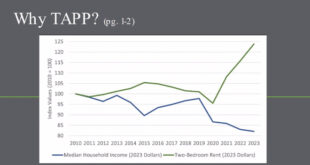“This is intended to make life simpler for people”
By Katherine Nettles
The Crested Butte South Property Owner’s Association (POA) had a chance to review proposed amendments with Gunnison County commissioners recently that it had submitted to the county regarding several aspects of its special area regulations. Some parts of the special area regulations document were updated for better organization and clarity, and some aspects were updated as a result of recent litigation involving the county, the POA and a small group of POA members over a land use regulation (LUR) dispute in CB South. The lawsuit resulted in some changes in the county’s LUR appeals process as well, prompting the county to request that the POA review their special area plan to ensure compatibility with it.
The CB South special area was created in 2003, and the regulations document was drafted in 2008. Both county staff and POA representatives agreed it was in many ways poorly written. POA manager Derek Harwell and POA attorney Beth Appleton went over the various details with commissioners on Tuesday, March 18. These included several dozen minor amendments to standards, guidelines and the specific terms and language used in the document. One change was removing the term “commercial area master plan” (CAMP) from the document where it was actually referring to the entire CB South area. The CAMP has been repealed and/or replaced as a separate document by the POA in recent years.
“We understand this today as being a legislative matter,” said Appleton. She asked why, if the county owns the document, an administrative fee of $8,000 was the POA’s responsibility. She also asked why the process involved hiring someone to write a new special area regulations document, since she had come on as the POA’s attorney after that fact.
Commissioners said they would investigate the fees and get back to them. There was a great deal of uncertainty as to how the plan had evolved over time, and whether it came at the county’s or POA’s direction. Those involved currently were not part of the process at its inception.
“We’ve always owned our regulations, from the beginning of the creation of this,” said county manager Matthew Birnie. “You can have your plan, but as [county attorney Matthew Hoyt] says, it’s the county’s land use authority, full stop. That’s not changed.”
Birnie said as the POA has updated its various plans and covenants, “The attempt was then to try and merge that into the actual land use authority. You’ve got authority under your covenants, but there’s a different authority under the LUR. And so the idea was you [the POA] did a plan to set your vision, and then the county tried to integrate that into the land use process. But I don’t think we would have requested how you got there. I think that was the decision of the POA to create your own vision.”
Commissioner Laura Puckett Daniels noted that they could only speculate. “Maybe it was murkier in the beginning, and initiated by the POA,” she said.
Hoyt said he appreciated the county’s dialogue with the POA and spoke to the unique nature of special area regulations “and the melding of subdivision covenants with government land use. I think it makes more clear that what the POA is doing when they are applying land use regulations is acting as a quasi-governmental entity. But when they are applying their own covenants they are acting as a private subdivision.” He said he believes the latest document appropriately melds the two concepts. He predicted this process would make things easier on the association.
Harwell confirmed that the POA board had reviewed the document in a public setting, but the process had invited “all sorts of outcry” at the POA meetings and been halted since the authority was ultimately the county’s.
“There are some groups that believe they should be voting on this,” said Appleton, speaking to some confusion among POA members about the document approval process although it is the county’s document to approve or amend.
After more discussion of the details, commissioners approved the changes unanimously.
“This is intended to make life simpler for people,” commented Puckett Daniels. “But as Beth has pointed out, it hasn’t always been simpler. So, we appreciate the willingness to come back to the table to work hand in hand on this document, and to have the attorney’s office highly engaged. Some of this was foisted upon us and some of it was homegrown…reading a poorly written document and trying to discern meaning can be excruciating, so thank you for getting us to a better place.”
 The Crested Butte News Serving the Gunnison Valley since 1999
The Crested Butte News Serving the Gunnison Valley since 1999



